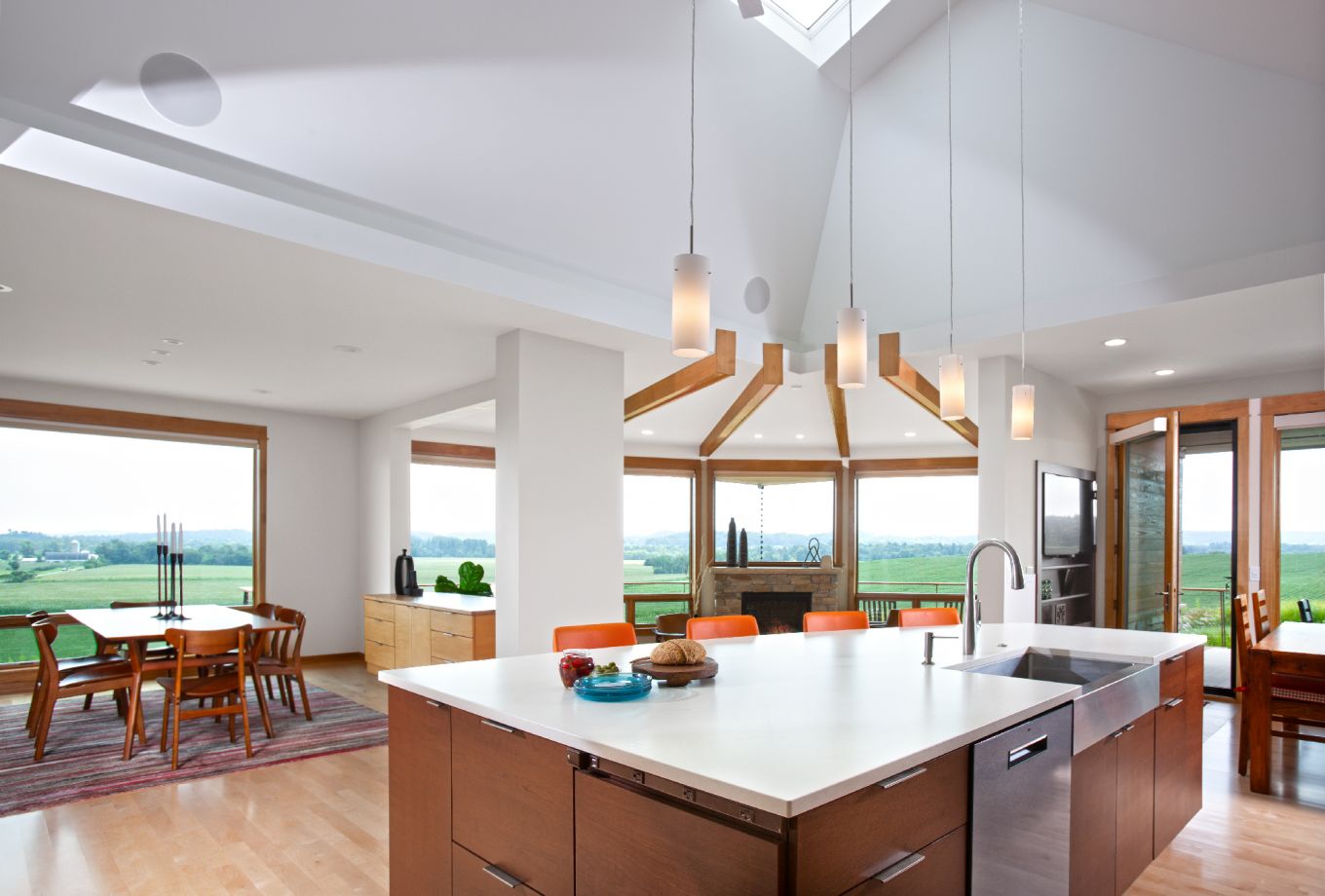When designing spaces that work for everyone, one crucial element is lighting. Beyond having convenient light switches, proper lighting aids in performing visual tasks and contributes to your overall comfort, safety, and well-being.
Brightness
For example, bright light that is evenly distributed throughout a space is essential for individuals with visual impairments. They may require different lighting levels to enhance their visual perception.
In addition, the older you get, the greater the need for brightness. As we age, we require twice the brightness every 20 years. Adjustable lighting systems allow you to customize brightness levels to your specific needs.
Dimming
Most lighting fixtures are either on or off. By using dimming/dynamic controls, you can set the scene in a room and adjust the brightness levels in spaces such as bedrooms, living rooms, entrance halls, or kitchens.
Dynamic controls have settings such as fade-to-dim, fade-to-warm, warm-dim, or dim-to-warm. At nighttime, you can automate the light to a warmer color as well as the speed of how fast it becomes brighter. We all get up in the middle of the night to go to the bathroom. To reduce falls, your path can be lit up, and the brightness gradually increases so your eyes can acclimate to the new level. This way, you’ll not be startled or fumbling for the light switch.
Color
Another feature of an accessible lighting plan is color. Light color plays a big part in influencing our mood and well-being. For instance, individuals with sensory sensitivities may benefit from warm or soft lighting that minimizes sensory overload and creates a calm environment. On the other hand, task-oriented areas require cooler or daylight-like lighting to promote focus and concentration.
Did you know? Accessible lighting design is indispensable for individuals with vision impairments. Frequently, the elderly fall because they cannot distinguish between vertical and horizontal surfaces. Contrast color created in toe-kick lighting, under-counter lighting, or handrails, create depth perception to assist older adults in navigating their homes more safely and independently.
Glare
In accessible lighting design, minimizing glare and shadows is also important. Glare occurs when there is either too much light, like from large windows, or there are too many reflective
surfaces of the same color. Glare can be particularly challenging for individuals with vision impairments and those who are sensitive to light. Older adults do better when avoiding glare
and opting for brightness.
In the instance of large windows, the proper automated shades assist in reducing glare. We can also reduce glare with indirect lighting and task lighting when paired with matte or satin finishes for your surfaces. The finishing touch is targeted illumination to make spaces cozy and inviting.
Access Design + Build specializes in accessible lighting design that will greatly enhance the environment and mood of any space. Contact us for your new universal lighting plan or light installation. We can walk you through our lighting design process to create a customized lighting experience for your home.

